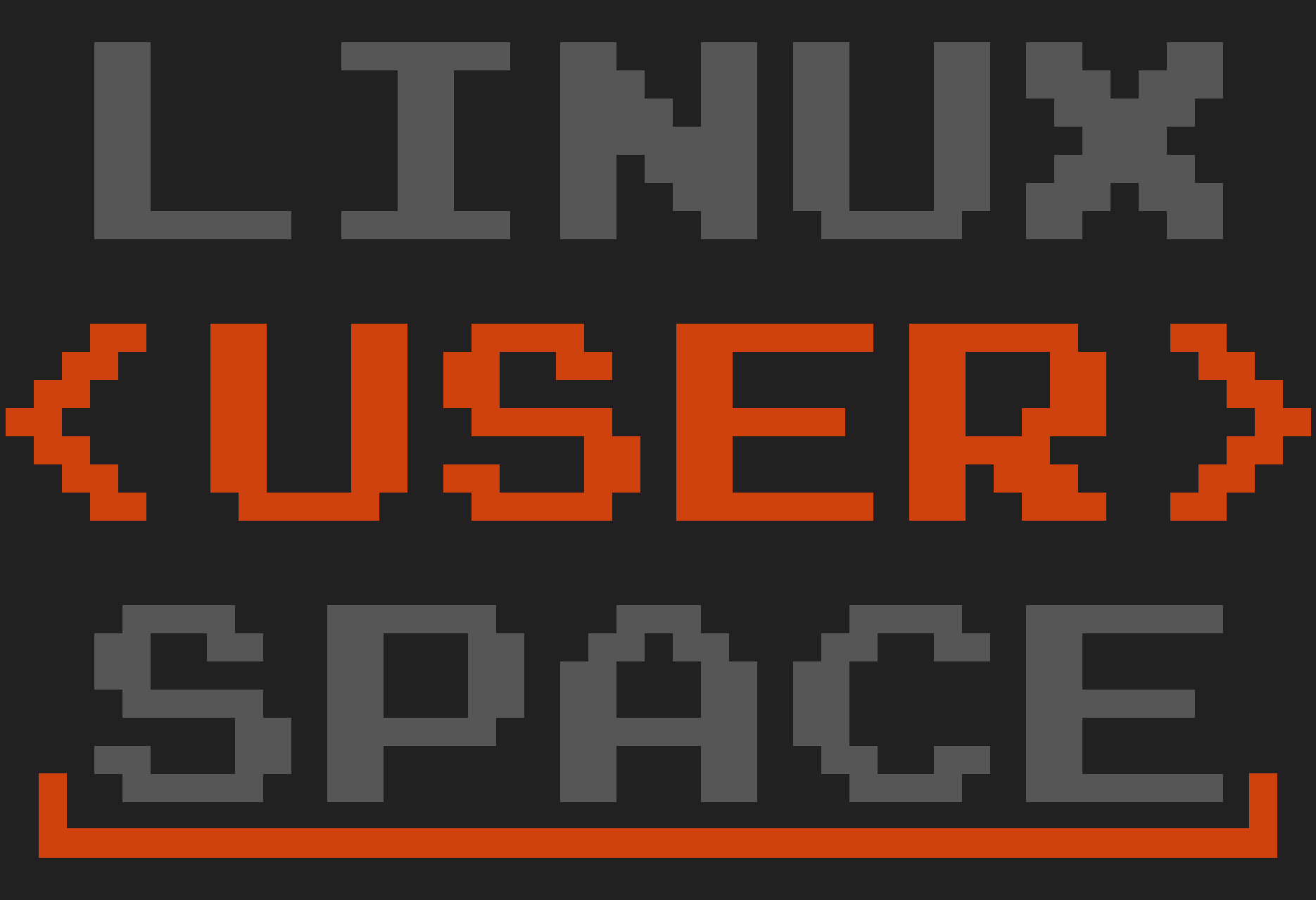Yeah, I very much prefer the Gentoo wiki. The way it’s designed & topics are explained, it just meshes with the way my brain works better.
An eclectic #nerdy #weirdo.
In addition to tech, #Linux, and other things #FLOSS, I’m also into #travel, jam bands (mostly Grateful Dead), music festivals, and anything related to exploring the #cosmos.
All puns are intended.
#actuallyautistic #deadhead #hockey
- 0 Posts
- 31 Comments

 4·4 months ago
4·4 months agoFour times? Pfffft…amateur 😜 /s (says the Gentoo user lol)

 4·6 months ago
4·6 months agoI used to use Joplin, I liked that it integrated with my Nextcloud, and the markdown format. However, the way that it handles the markdown files was too black-boxey to me, with the way it split them up in a weird scheme.
Now I use Ghostwriter with straight markdown files inside my Nextcloud folder. So I still get the syncing functionality, but a more flexible setup that doesn’t require a specific app to access all of my notes.
I say go for it. I’ve been using it for about 2 years, and I no longer feel like distro-hopping (not sure if you fall into that category of Linux user), because it’s not opinionated about how it’s meant to be used. It gives you all the tools (and foot-guns) to do whatever you want with your computer.
You don’t need separate computers for a local mirror and/or build server to run Gentoo, I’ve never done that. I’ve never owned a Mac, so I can’t really offer any tips hardware-wise, but use a live USB of a distro that you’re already familiar with, so you can refer to the handbook as you go. The people on Gentoo’s IRC channel & forums are very helpful if you come against any roadblocks.
It does take a while, not gonna gloss over that. Once you have it installed, there are very few issues that would require a full re-install. Portage is an awesome package manager, the language of its warnings/errors took some time to wrap my brain around, but it’s very verbose in describing what’s going on.

 3·7 months ago
3·7 months agoI really like the simple design that separates the results into docs/blogs/magazines. Obviously, the results reflect the current state, but I appreciate your approach in both the design & sourcing the search results. I think there’s a lot of potential for this to be a regular part of my toolbox, hopefully this takes off!

 7·7 months ago
7·7 months agoYeah, I totally get that, I have really bad memories myself.
If it’s an ncurses/similar interface that enables keyboard navigation through dmesg/journalctl, and provides info that allows us to properly diagnose it, I can see this being useful.
But yeah, I’ll admit that simply saying “BSOD’s are coming to Linux” without additional info about the implementation does bring feelings of dread in me.

 162·7 months ago
162·7 months ago…and of course, this news is getting mixed reactions from the Linux nerds…
Back when I used Windows, I remember the BSOD’s being about as useful to me as someone pointing in opposite directions saying “he/she/they went that way.” So long as the new Linux blue screens provide info that’s actually useful in diagnosing the problem(s), I see no issues with this. [shrugs]

 9·7 months ago
9·7 months agoI second raptir’s note about running zypper dup in the terminal to do system updates. Zypper’s a bit slow because it lacks parallel downloads, but it provides good info if there are any issues.
If you plan to use flatpaks, add the flathub repo with the --user option, and use that one to install. If I didn’t go that route, it prompted me to enter my password for every flatpak app with an update. I’m also a deplorable Plasma user 😜, I don’t know if the same behavior happens with Gnome software, it may be a weird Discover thing (shrugs).
Also, if you need the non-free multimedia codecs, run the following commands:
zypper install opi
opi codecs
Automates adding the Packman repo & switching the relevant packages.
Those are the main quirks I learned with Tumbleweed.

 2·8 months ago
2·8 months agoWell, no plan survives initial implementation, you’re always going to encounter new problems & figure out sustainable solutions. Far too often, I’ve seen companies rush the release to “get something out there” and start the revenue faucet. Then issues crop up that make the device a non-starter for many people, they try fixing it mid-flight, the device flops & the company’s made irrelevant.
I’m saddened that I’ll have to wait longer for my 16", but I’m really glad Framework approached it in this way.

 4·8 months ago
4·8 months agoThanks for sharing, nice to hear about the experience of someone that’s not that tech-savvy putting these together, really shows how well it’s designed.
Really glad to hear about the battery life. I own their 1st iteration (11th gen i5), and the battery life…heavy sigh…leaves much to be desired. I prefer a 15~16" laptop, 13" feels claustrophobic to me, but I wanted to support Framework.
I was able to get into Batch 2 for the 16, and it takes every fiber of my being not to constantly check their blog/forums for delivery updates. lol

 2·8 months ago
2·8 months agoI would never say “no” to raw machined aluminium, I definitely like the look, but it’s not really high on my list of priorities when it comes to ordering a laptop (Framework or otherwise). I would definitely consider it if they made it an option.

 1·8 months ago
1·8 months agoYeah, I tried a DisplayLink dock a handful of years ago. Ports for external monitors didn’t work at all, ended up being an over-priced USB hub.
Looking forward to see how this version performs, keep up the great work!
[crosses fingers for a smooth transition]

 2·10 months ago
2·10 months agoHope you & your family are recovering well, I had COVID last summer, and I was out of commission for a little over a week.
Focus on getting healthy, listen to your body, and don’t rush back to the studio.
There are three other seasons if we get bored. ;-)
I never recommend Manjaro, even for experienced users. Multiple times, they’ve let their ssl certificats expire, and renewing those has been easy to automate for a number of years at this point. There have been a number of cases where they ship work-in-progress versions of software as part of their default install, and there was an open letter posted calling this out: https://dont-ship.it
So in my opinion, Manjaro leaves much to be desired from a project governance standpoint.
Now, using an Arch-based distro that does the install process for you doesn’t absolve you from learning what it takes to maintain an Arch install; at some point, something will crop-up that requires manual intervention to get back up & running again after an update.
If that is what you’re looking for, I suggest EndeavourOS.
If you want a rolling release, I suggest going with openSUSE Tumbleweed. The installer allows you to pick & choose what you do/don’t want/need, and has a great rollback system in case an update causes problems.
Otherwise, I would suggest Fedora. Stays very current, and the in-place upgrade process is very seamless at this point.

 8·11 months ago
8·11 months agoYeah, the average user: 1) doesn’t care what’s running under the hood, and 2) doesn’t want to control what’s running under the hood.
I’m definitely not an “average user.” I like specifying that I don’t want wifi, bluetooth, or dvd functionality on my desktop when I have no need/desire to use them. So use flags are one of the main reasons I use Gentoo. Occasionally, it causes some mild irritation, but it’s a net-positive for me.
Can’t say that I’ve really used any of the features mentioned in this list, so doesn’t really affect my experience negatively. Also, updating some icon sets to fit with the overall theme would provide a more unified experience. So two thumbs-up from me for removing code that, by & large, wasn’t getting used, should help maintaining it in the long run.

 32·11 months ago
32·11 months agoI’ve read articles that were clearly created using ChatGPT, there was no extrapolation to add context/details to illustrate their points, and parts of it read like it just pulled from a Wikipedia page. The tone felt more robotic than pieces they published 6~8 months ago.
ChatGPT can be useful when it’s part of a larger writing process, but I have a feeling that sites that create prompts and paste the output as their articles will slowly die-off because the quality isn’t there.


I totally get why this is being put forth. Watch Brodie’s videos on the Wayland portals (after binging on LUS, of course ;-) ), and notice which DE is more actively helpful in making the portals better…I guarantee you it doesn’t start with a “G.” They actually mention this in the change proposal, and I doubt that Red Hat is blind to this difference.
It’ll be interesting to see how this plays-out.